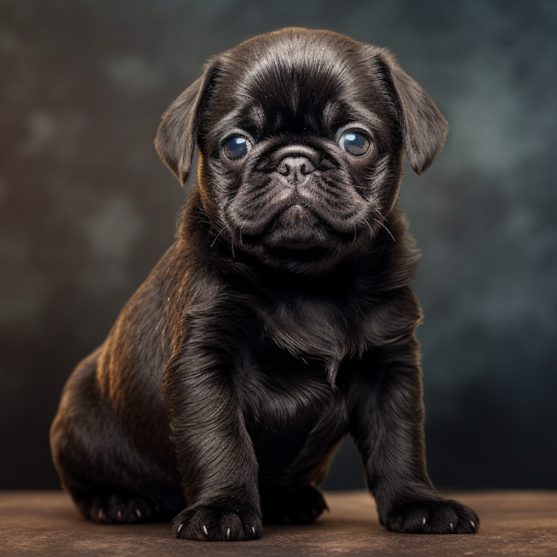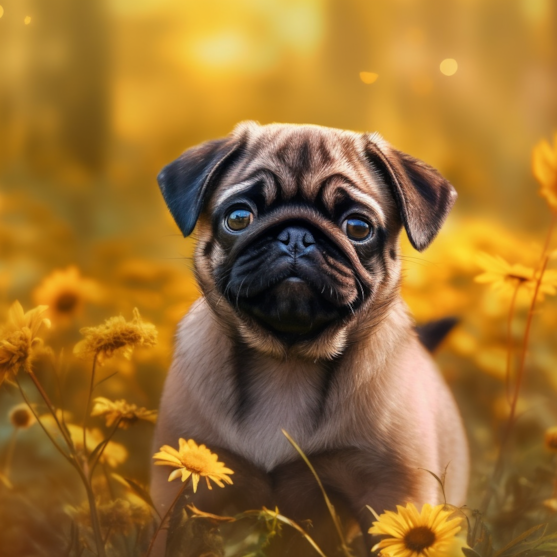Pug Breed Information


The Pug is a gentle, happy little dog with a charming personality. Pug babies are lively and fun-loving, with an affectionate nature. As even-tempered and sweet dogs, they make wonderful playmates for kids of all ages and lovely companion pets for couples and singles. These little joy bringers love to cuddle and are generous with their Pug love. When it comes to their family, the Pugs attach like magnets.
Characteristics
- Pug puppies love to snuggle up next to their owners, but also enjoy sitting or lying near them or on their lap
- Pug adults get along well with other pets and are very affectionate toward all family members
- Pugs are highly adaptable and easygoing; they are comfortable in both small city apartments and large families
- Thanks to their short and low-shedding hair, Pug grooming involves very little effort
- The Pug size is small to toy-size. A full-grown Pug weighs between 14 and 25 pounds. Pugs can also be found in smaller sizes such as the Toy Pug, Mini Pug, and Teacup Pug
- The Pug is cute and playful, but also extremely vigilant when it comes to being a watchdog
- The Pug is a gentle, playful, and docile dog that has been a member of the American Kennel Club’s Toy Group since 1885
- Pug puppies are easy to train. They love to socialize and make ideal first pets for novice owners
- Pug dogs are goofy and amusing, always showing off their funny side

Appearance
Pugs are some of the friendliest dogs on the planet. Their short and wrinkly faces may appear awkward and out of place at first, but once you see their Pug eyes, you're sure to fall in love with their playfulness. These small dogs are great for apartment living, as they are very petite and don't need a lot of room to run around.
If you've never seen a Pug dog before, you may be surprised by his short and stout appearance. You may also notice his dark, rounded eyes and soft cheeks. If you come face-to-face with a Pug, you'll probably find it difficult not to love him, as Pugs are kind and adorable-looking creatures.
Common Pug colors are brown, fawn, black and white, or just black Pug. Some rare Pug colors are brindle Pug and white Pug.
The adorable Pug is a toy breed that stands at 10 to 11 inches tall and weighs between 14 to 25 pounds. The Pug size can vary based on individual diets and exercise routines. There are some differences between males and females, with the female Pug being shorter and lighter.
It may be easy to confuse a Pug dog with a Frenchie (French Bulldog) but they are two different breeds. The Pug is shorter with squatter features, while the Frenchie is taller with more slender features. They also have different personalities, histories, habits, and physical characteristics.
Temperament
The happy Pug is a fantastic family dog and will make your dog-loving children smile every time they look at them. The cute Pug has a wide variety of personality types, from adventurous and funny to laid-back and calm. Pugs love to play with their human siblings and won't mind a little rough playing, as they are a hardy dog breed despite their small size.
The Pug is a creature of habit but thankfully, they're always ready to break their routine and have a good time. Pug puppies are the happiest when they’re part of the family and they love to show off their goofy antics as long as there's a belly rub in it. Dogs may be man's best friend, but they can also be great exercise buddies. Some of their favorite activities include going on walks, playing fetch, and running around at the dog park. Adorable Pugs also enjoy cuddling, napping, and getting belly rubs. And don't forget about those full-body massages that Pugs simply adore.
The Pug is a breed of dog that is helpful and playful. The breed has been around for hundreds of years, and their adorable looks and good-natured persona has made them a popular choice for pet owners all over the world.
Care
Pug Grooming
Given their small size and very short hair, Pug grooming takes very little effort. Pug grooming steps include coat brushing, nail clipping, bathing, and brushing of the teeth. Because Pugs have a very short, fine hair type, they require very little brushing. Ideally, you should brush your Pug dog once every week to get rid of any excess fur.
Being a very laid-back breed, the Pug’s exercise routine might not provide enough movement for Pug dogs to trim down their nails naturally. Typically, their nails grow quite long every few weeks and require a clipping once they start making clicking sounds as they walk. Your Pug will also need its teeth brushed as often as every day.
Bathe your Pug baby as frequently as every 3 weeks up to no more than every six weeks depending on the length of the season and the amount of playtime involved. When bathing, choose a shampoo and conditioner that works for your pet's skin and coat. Monthly bathing will help your adorable Pug maintain a healthy skin and a smooth coat. Bathing your Pug is a two-step process, designed to remove all dirt and dander while promoting the shedding of their gorgeous coats. To begin, we recommend running a high velocity cool air dryer over your dog’s entire body in order to loosen any dirt and dander, as well as removing any excess fur. Once you are satisfied with this, lightly brush the coat to help shed some of the extra fur.
Pug Exercise Needs
The Pug prefers lounging around and playing with their owners to vigorous exercise. This is because of their low tolerance for exercise, but they should still be getting some moderate daily exercise in order to maintain a healthy weight and a balanced life. Ideally, you should take your cute Pug on one or two daily walks and provide some interactive play indoors. 20 minutes of daily walking should be more than enough to keep your adorable Pug happy and in great shape.
Pug Health
Despite their reputation as a sickly dog breed, Pugs that are professionally bred between two meticulously screened adult Pugs enjoy very good health. Common conditions that the Pug might face include dental infections, eye problems, skin irritations, and joint problems. Although these conditions are not common with our Pug puppies, it is always recommended to visit the veterinarian frequently for routine checkups.
Pug Lifespan
How long do Pugs live? The life span of dogs depends on their breed, and the Pug dog is no exception to this rule. Generally, you can expect your adult Pug to live anywhere between 12-15 years. The Pug lifespan can exceed 12 to 15 years in some cases.
Pug Training
In order to train a dog, you first need to find out what your puppy is motivated by. What is the one thing that your Pug baby desires more than anything else? It might be treats, toys, praise, belly rubs, or a simple petting on the head. Once you identify what your Pug puppy responds best to, you can begin training.
Positive reinforcement is the key when training Pugs, which focuses on rewards for good behaviors and ignores the negative points. This is important because it keeps your Pug puppy motivated and happy. So even though you will need to address the problems your Pug is having, you should never punish them. Praise is crucial because it gives them the desire to keep up the good work.
Teach your happy Pug to sit. This will not only teach them manners but also self-control. There are many ways to do this. One way is to hold a yummy treat up high and say the command, "sit." You may need to move the treat towards the back of their head and gently press down while repeating the command. When they sit, give them the treat and praise their good work.
The cute Pug puppies love attention, so give it to them when they do something good. Praise them lavishly and they will learn the behaviors you want quickly. This is an effective tool for training Pugs and can help you teach them the patterns of behavior you desire.
History
For over two millennia, the remarkable Pug puppies have never seen their popularity drop. Popularized by the ancient Chinese, these lovable pets were praised for their loyalty and bravery. In fact, the word "Pug" comes from an Old English word meaning "strength", which refers to the Pug’s ability to guard his master. Over two thousand years of love and affection is why the adorable Pugs have never been out of style.
The adorable Pugs of today still enjoy an aristocratic lifestyle and are pampered with the finest foods and luxuries. Pugs are still very much in demand and the internet has made it a lot simpler for ordinary people to get their own fabulous Pug puppy. They're still popular pets for celebrities and royals, especially smaller sized Pugs like the Mini Pug, Teacup Pug, and Toy Pug.
The cute Pugs are the world's most popular dog breed. Originating in Asia, they travelled to Europe during the 16th century alongside Dutch traders. Pugs were highly valued by European royals and Tibetan monks alike, a testament to their cheerful, affectionate demeanor. Queen Victoria is a well-known lover of pugs, favoring them for their loyalty, courage and beauty.
The Pug breed is and has been one of the most loved dogs in the world. Thanks to their many qualities and fantastic reputation as family dogs, they have been selected to be part of numerous crossbreeds.
Types of Pugs mixes that can be found today:
- Australian Shepherd Pug mix
- Frug - French Bull Dog Pug mix
- Golden Retriever Pug mix
- Pitbull Pug mix
- Jug - Jack Russell Terrier Pug mix
- Porgi - Corgi Pug Mix
- Puggle- Beagle Pug mix
- Hug - Husky Pug mix
- Chug - Chihuahua Pug mix
- Daug - Dachshund Pug mix
- Pom-A-Pug - Pomeranian Pug mix
- Bassugg - Basset Hound Pug mix
- Bugg - Boston Terrier Pug mix
- Poxer - Boxer and Pug mix
- Brug - Brussels Griffon Pug mix
- Schnug - Mini Schnauzer Pug mix
- Pugshire - Yorkshire Terrier Pug mix
- Pug Zu - Shih Tzu Pug mix
- Pugalier - King Charles Cavalier Spaniel Pug mix
- Shug - German Shepherd Pug mix
- Pugapoos - Poodle Pug mix
- Pugabull - Bull Pug mix
- Dachshund - Dachshund Pug mix
- Puginese - Pekingese Pug mix
- Malti Pug - Maltese Pug mix
- Cocker Pug - Cocker Spaniel and Pug mix
If you love the silly and adorable Pug, chances are you're a bit of a history buff. And it's fitting, since the adorable Pugs have been around for so long. In fact, it all began with the Pug Club of America, founded in 1931. This club was both a registry and informative group aimed at improving the quality of breeding. In 1885, the breed was recognized by the American Kennel Club as one of their first dogs.

